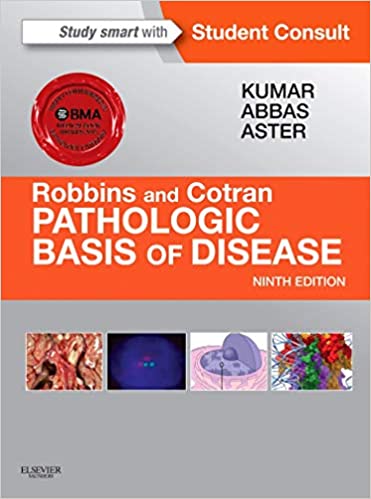موضوعات
آموزش و پرورش
ادبیات و زبان
پزشکی، دندانپزشکی و داروسازی
تاریخ و جغرافیا
داستان و رمان
دیگر
دین و فلسفه
روانشناسی
ریاضیات و آمار
سلامتی، تناسب اندام و رژیم غذایی
شیمی و پلیمر
علوم اجتماعی و حقوق
علوم زیستی و بیوتکنولوژی
فیزیک و نجوم
کامپیوتر و اینترنت
کتابهای کودکان و داستان
کسب و کار و اقتصاد
کشاورزی و دامپزشکی و غذا
معماری
مهندسی و فناوری
هنر و تئاتر
محصولات
Cognizance of Schizophrenia:: A Profound Insight into the Psyche - Original PDF
نویسندگان: خلاصه: Broadens your scope for neuroimaging, pharmacogenomics, and implications Reinforces basic principles and invaluable current information for researchers, psychiatric practitioners, and students Maximizes reader insights into future directions in research and developing new effective approachesDread and Hope: Christian Eschatology and Pop Culture - Original PDF
نویسندگان: خلاصه: Description: Christianity was born in the midst of great expectation and fear about the world’s future. The existing Jewish paradigm of the coming Messiah, his antithesis, and the initiation of the coming age set the stage for Christian beliefs about the end of the current age. However, the unexpected death and resurrection of Jesus caused that paradigm to be reformed within the burgeoning Christian faith, reshaping hopes, and reworking old patterns. Dread and Hope explores the ways in which those old paradigms were challenged by Jesus’s death and resurrection, how the resulting eschatological landscape was understood within Christianity, and how modern popular culture has consumed and modified various components of Christian Hope. Joshua Wise examines how the central Christian eschatological themes such as the Antichrist, the Great Persecution, Heaven, and Hell have both been transformed and preserved in novels, television, films, and video games. Drawing on works such as 1984, Diablo, The Stand, What Dreams May Come, and the Fallout series, Dread and Hope considers how the human fears and desires shaped by Christian beliefs are expressed in popular culture.A Caregiver's Guide to Alzheimer's Disease: 300 Tips for Making Life Easier - Original PDF
نویسندگان: خلاصه: An estimated 5 million Americans have Alzheimer's disease. That number continues to grow — by 2050 the number of individuals with Alzheimer's could range from 11.3 million to 16 million. Alzheimer's disease is not a normal part of aging. It is a devastating disorder of the brain's nerve cells that impairs memory, thinking, and behavior. Winner of the 2006 American Journal of Nursing Book of Year Award, A Caregiver's Guide to Alzheimer's Disease will help readers understand what is physically happening to the brain so they can empower their own special skills and talents throughout the disease process. Chapters cover legal and financial issues, family forums in the caregiving process, the role of medication at various stages of the disease, helping children understand what is happening to a loved one, handling the holidays and celebrations, and making the living environment more stimulating and enjoyable. With an abundance of pointers and guidelines for affected individuals, their families, friends and caregivers, A Caregiver's Guide to Alzheimer's Disease is essential for all readers who want to focus on the capabilities that remain instead of those that have been lost.Robbins & Cotran Pathologic Basis of Disease 9th Edition - Original PDF
نویسندگان: خلاصه: It is obvious that an understanding of disease mechanisms is based more than ever on a strong foundation of basic science. We have always woven the relevant basic cell and molecular biology into the sections on pathophysiology in various chapters. In this edition we go one step further and introduce a new chapter at the very beginning of the book titled “The Cell as a Unit of Health and Disease.”Fruit crops - Original PDF
نویسندگان: خلاصه: Some of the world's most widespread and debilitating nutritional disorders, including birth defects, mental and physical retardation, weakened immune systems, blindness, and even death, are caused by diets lacking in vitamins and minerals. Low fruit and vegetable intake is a major contributing factor to such micronutrient deficienciesFruit Flies (Tephritidae): Phylogeny and Evolution of Behavior - Original PDF
نویسندگان: خلاصه: Fruit flies (Diptera: Tephritidae) are among the most destructive agricultural pests in the world, eating their way through acres and acres of citrus and other fruits at an alarming rate and forcing food and agriculture agencies to spend millions of dollars in control and management measures. But until now, the study of fruit flies has been traditionally biased towards applied aspects (e.g., management, monitoring, and mass rearing)-understandable, given the tremendous economic impact of this species.This work is the first that comprehensively addresses the study of the phylogeny and the evolution of fruit fly behavior. An international group of highly renowned scientists review the current state of knowledge and include considerable new findings on various aspects of fruit fly behavior, phylogeny and related subjects. In the past, the topics of phylogeny and evolution of behavior were barely addressed, and when so, often superficially. Fruit Flies (Tephritidae): Phylogeny and Evolution of Behavior is a definitive treatment, covering all behaviors in a broad range of tephritids.Hatred, Emptiness, and Hope: Transference-Focused Psychotherapy in Personality Disorders - Original PDF
نویسندگان: خلاصه: Introduction The present volume continues my investigation of the psychopathology and treatment of severe personality disorders. It focuses on the analysis of particular clinical features of personality pathologies and describes contemporary psychoanalytic object relations theory as a general theoret- ical frame of treatment that allows us to conceptualize both normal per- sonality functioning and the very nature of personality disorders. This volume also includes my recent contributions to understanding the rela- tionship between neurobiological dispositions and their interaction with psychodynamic developments, again, both in normality and psychopa- thology. Finally, this volume explores the application of object relations theory to group processes, love relations, and therapists’ training. Part I of the book includes major theoretical statements. Chapter 1, “Object Relations Theory and Transference Analysis,” presents a brief, updated summary of contemporary object relations theory and its direct relevance to transference analysis, the fundamental therapeutic approach of transference-focused psychotherapy (TFP). This chapter summarizes the theoretical approach that informs the new psychotherapeutic devel- opments in the treatment of severe personality disorders that are de- scribed throughout the entire volume. Chapter 2, “Some Implications of New Developments in Neurobiology for Psychoanalytic Object Relations Theory” summarizes developments in neurobiology regarding the con- ceptualization of affect systems and their role as the motivational basis ix x HATRED, EMPTINESS, AND HOPE for establishing internalized dyadic self- and object-relations structures. This chapter shows how the underlying limbic and cortical brain struc- tures and functions contribute to embedding the fundamental concepts of self and of significant others. It proposes that the formation of such dy- adic structures is an essential task of higher levels of psychic functioning. Part II, on technique, updates empirical studies of the Personality Disorders Institute at Weill Cornell Medical College, expanding the ap- plications of TFP, exploring its relationship to standard psychoanalytic technique, and outlining a general comprehensive theory of technique that applies to both psychoanalysis and its derived psychotherapies. Chapter 3, “Extensions of Psychoanalytic Technique: The Mutual Influ- ences of Standard Psychoanalysis and Transference-Focused Psycho- therapy” presents an updated view of TFP in comparison with standard psychoanalytic technique that differentiates more sharply these two technical approaches and discusses the problems in training therapists efficiently in both modalities. Chapter 4, “Therapeutic Implications of Transference Structures in Various Personality Pathologies,” presents an overview of transference developments in different modalities of severe personality disorders and the modifications in technical approaches to transference analysis related to these structural differences. It is a highly specialized description of TFP in action. Chapter 5, “Affective Domi- nance, Dyadic Relationship, and Mentalization,” focuses on two basic premises from which the therapist enters every therapeutic session—that is, the alertness to affective dominance and the diagnosis of the predom- inant dyadic object relationship linked to it. By illustrating this approach with clinical cases, the chapter also points to similarities and differences between TFP and mentalization-based therapy (MBT), an alternative psychodynamic approach to severe personality disorders. Chapter 6, “Reflections on Supervision,” describes my personal experience as well as general controversial issues regarding the supervision of psychoan- alytic and derivative treatments. In the process, the chapter details our collective experience of training and supervising clinicians in TFP over many years at the Personality Disorders Institute. Part III, on specific psychopathologies, deals with particular disor- ders within the broad field of severe personality disorders. Chapter 7, “Psychodynamics and Treatment of Schizoid Personality Disorders,” presents our experience with these complex disorders. Schizoid struc- ture has received less attention in recent times than other types of severe personality disorders, particularly borderline and narcissistic personal- ity disorders. This chapter presents a diagnostic update and summa- rizes the specific contributions of the TFP approach to the treatment of schizoid personality. Chapter 8, “Psychotic Personality Structure,” ex- plores the differences between borderline personality organization and psychotic personality organization. It describes the development of psy- chotic features as a potential transitory regression in patients with bor- xiIntroduction derline personality organization, as well as a reflection of a psychotic structure that only emerges during treatment. It proposes correspond- ing differences in technique for transitory psychotic developments aris- ing in sessions, for transference psychosis, and for the emergence of major psychotic illness during the course of TFP. The chapter also ana- lyzes the nature and shifts in reality testing in the context of transference analysis. Chapter 9, “Narcissistic Pathology of Love Relations,” deals with the specific pathology of narcissistic personalities, the great diffi- culties of these patients in establishing and maintaining a love relation in depth, and the general study of sexuality and the capacity to love as part of the diagnostic evaluation of all patients with severe personality disorders. It also considers the influences of the therapist’s own emo- tional maturity in the assessment of this aspect of psychopathology. Part IV deals with the application of object relations theory to inpa- tient hospital treatment, to group regression and political leadership, and to psychoanalytic education. Chapter 10, “Psychoanalytic Ap- proaches to Inpatient Treatment of Personality Disorders: A Neglected Dimension,” examines the inpatient treatment of patients with person- ality disorders, a neglected therapeutic approach in the United States. Although pioneered predominantly in the United States, inpatient treat- ment has been developed in new ways in recent European experiences, with relatively extended hospital treatment of severe personality disor- ders. This chapter summarizes both the North American and recent Eu- ropean experiences with an important therapeutic instrument that, mostly for financial reasons, has been underutilized in the United States. It offers important technical tools that are relevant for the repetitive brief hospitalizations of regressed borderline patients that have replaced se- lective long-term inpatient treatment. This approach may be the basis for the development of optimal treatment of very regressed stages of illness in the future. Chapter 11, “Malignant Narcissism and Large Group Re- gression,” applies psychoanalytic object relations theory and the devel- oping knowledge of the social functioning of some personality disorders to the study of the mutual influences of severe leadership pathology in organizational and political structures and the psychological conditions that underpin large group regression. Political circumstances that foster such large group regression in social subgroups and leadership with ma- lignant narcissistic features tend to reinforce each other, with potentially damaging and dangerous consequences to the social community. This chapter is a contribution to the clarification of these potentially threaten- ing and damaging social developments. Chapter 12, “Challenges for the Future of Psychoanalysis,” applies the psychoanalytical approach that underlies this volume to the analysis of particular conditions of psycho- analysis today as a profession, an educational enterprise, and a social or- ganization within the mental health sciences. This chapter and the book end with recommendations for innovations that may strengthen the role xii HATRED, EMPTINESS,AND HOPE of psychoanalysis as a profession, a treatment approach, and a social or- ganization. It proposes solutions to organizational problems, particu- larly stressing the urgent need for development of empirical research, psychoanalytic psychotherapies, and radical renovation in its educa- tional structure.Our Hopes, Our Future: Insights from the Hope Barometer - Original PDF
نویسندگان: خلاصه: The results of the Hope Barometer for the years 2019 and 2020 sketch a rather dark future full of crises and show the psychological consequences of such sce- narios. If we as individuals and as a society are to flourish, we need images of a hopeful world that will promote our commitment and cohesion. But what does it take to ignite the flame of hope for a livable future together without a naive optimism trivializing and playing down the current problems? Hope contains the belief in a better world but also the recognition of obstacles and the moti- vation to act. This book presents the phenomenon of hope in connection with individual psychological findings and socially relevant developments. After the psychological basics of future thinking, the general expectations and wishes for the future of around 10,000 people from fourteen countries are presented. The experiences of the Corona pandemic give hope because they show how people can deal successfully with crises. This results in the importance and character of individual and social hope.آیا کتاب مورد نظر هنوز بر روی سایت قرار نگرفته است؟ جای نگرانی نیست! کافی است بر روی گزینه سفارش کتاب کلیک کرده و درخواست خود را ثبت کنید. در کمتر از چند ساعت کتاب شما را آماده خواهیم کرد.









